What Do Squirrels Eat In The Wild And At Home?
Charlotte GreenToday we will tell you the diet of squirrels in the wild, at home, in parks, and in gardens. We will also list foods that squirrels should not be fed.
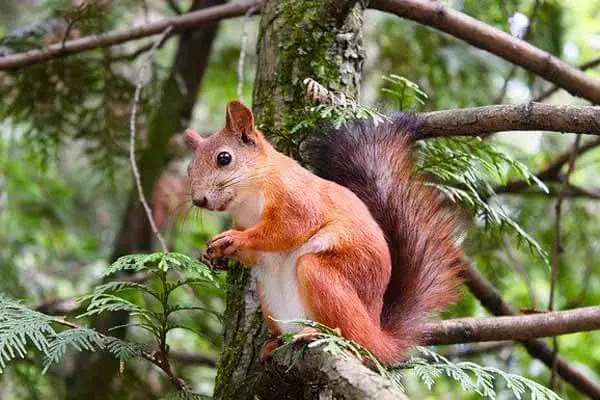
Squirrels are a numerous group of small rodents that live in many parts of the globe, except for Antarctica and Australia. Their distinctive features are an elongated body and a large fluffy tail. Their fur coloration varies depending on the region of their residence and season; it can vary from white to black.
The main territory for squirrels is forests, parks, and squares. They occupy hollows in trees or build spherical nests of branches, moss, wool, and grass. Sometimes rodents prefer to find empty bird nests and even settle in birdhouses. What does a squirrel eat?
What do squirrels eat in the wild?
The diet of squirrels living in the wild depends greatly on the climatic conditions of the region and the time of year. They make large food reserves for the winter – squirrels don’t hibernate in winter. With the onset of spring, rodents start searching for fresh sources of food. Squirrels eat fir and pine cones, berries, roots, pine nuts, lichens, tree buds, bark, and needles.
Squirrels make large stores for the winter but tend to forget the locations of their hoards. Often one squirrel finds another squirrel’s supplies, which saves it from starvation. In especially hard times these fluffy animals do not disdain to eat frogs.
Summer is the time of playtime and plenty of food. The ratio of squirrels noticeably increases and is replenished with mushrooms, which they are very good at. Squirrels often visit vegetable gardens in search of fresh fruits and vegetables. But they also do not refuse animal food. If there is not enough plant food, the squirrels easily turn to lizards, birds, birds’ eggs, insects, and their larvae.
In summer a squirrel usually needs 45 grams of food a day (85 grams during pregnancy), and even less in winter – 35 grams. The basis of food is pine nuts, acorns, beechnuts, hazelnuts, seeds and roots of some plants, and mushrooms.
Squirrels usually stock up on supplies for the winter. Cones, nuts, and acorns are buried in the ground or hidden in hollow trees and nests, of which one squirrel always has several. They often forget about them and find them by chance, thanks to their sense of smell. When it’s cold squirrels don’t eat much, and during severe frosts they wait in hollows or nests, hibernating and using supplies. The hungriest time is the end of winter and early spring. Lack of food in winter and infectious diseases kill up to 85% of young squirrels.
What do captive and park squirrels eat?
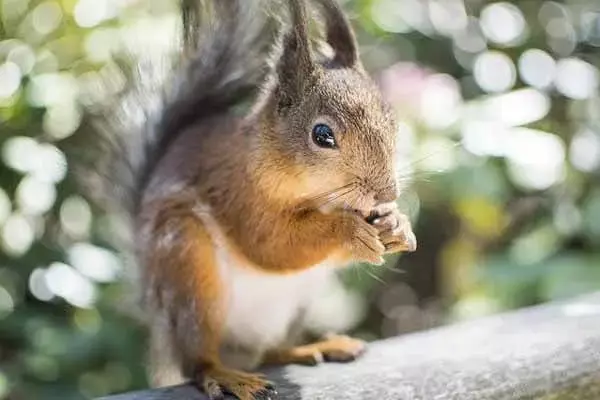
Squirrels eat a variety of foods – they are omnivorous rodents. Here’s what squirrels eat:
•White wheat bread (no more than 10 g per day);
•Pine nuts, hazelnuts, and raw unsalted peanuts (10 g per day);
•Walnuts (10 g once every 3 days);
•Carrots, cabbage, and apples 5 g every other day;
•Chestnut (a little every other day);
•Sunflower seeds, pumpkin seeds (10 g every day);
•Berries, fruits, dried fruit, sweet cookies, hemp seeds, lettuce, and dried mushrooms (2 g per day);
•Milk, cottage cheese, and butter 2 to 3 g per day;
•No more than 1 g of chicken eggs per day;
•Honey, jam, bone meal, fish, and chalk (alternate between the two, not more than 2 g per day);
•Grass, cones, fresh plant shoots, and pine needles in unlimited quantities.
One should not overfeed the animals – it has a bad effect on their mobility and often leads to unfortunate consequences. If a squirrel lives in a park, excessive diet leads to obesity, so it will not be able to find food in the right quantities by itself.
Squirrels in squares or houses can be fed unsalted and not very sweet cookies, white bread crumbs (dried, but not fried), and other goodies, but in small quantities. Unnatural foods can cause serious digestive and dental problems for the rodent.
What squirrels should not eat categorically?
Never treat a squirrel to these treats:
•Smoked, salty, or overly sweet foods;
•Salty beer snacks – chips and salted fried peanuts, flavored breadcrumbs, crackers, salted fish;
•Fried foods (including peanuts and sunflower seeds);
•Exotic fruits and nuts, especially almonds (they are poisonous to them).
Remember to wash your hands well after feeding squirrels. Despite their cute and harmless appearance, they can carry infections and bacteria dangerous to humans.
What do squirrels eat in the wild? Squirrels diet
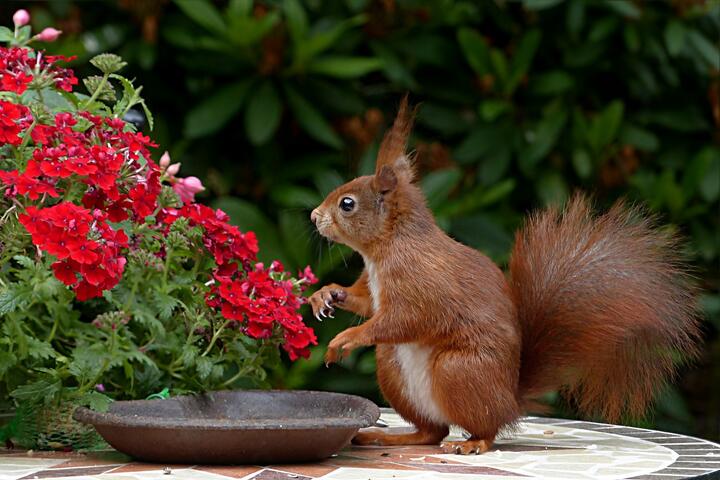 Photo by Pixabay on pexels
Photo by Pixabay on pexelsIf you’re wondering what do squirrels eat in the wild, you are not alone. These small mammals are omnivores who will eat almost anything. In fact, humans have been able to make them more adaptable and helpful, and they have learned to trust humans, supplementing their diets with our food. Because we are so trusting, squirrels will happily ingest any type of human food we offer them. In addition, they’re very smart, and they can also devise plans to fend off predators.
While most squirrels have a varied diet, it is possible to make their diets more nutritious by feeding them bread. Squirrels love fruits and grains, but too much fruit can prevent them from getting the calcium they need. Squirrels will eat a greater variety of fruit and vegetables during the summer and fall, but not bread, which is high in sugar. So, you’re better off feeding them fresh vegetables and fruits instead.
The main ingredients in squirrel foods are raw, nutritious, and easy to digest. Some species like the northern flying squirrel will eat acorn truffles, which are underground fungi that look like acorns. Squirrels can ingest any kind of mushroom, but there is no need to worry about the deadly amanita toxins. In spring and summer, the squirrels eat just about anything that’s available.
Squirrels are not picky eaters. They can make do with almost anything you throw at them, from nuts and seeds to meat and vegetables. Even some human foods contain high sugar, salt, and chemicals that squirrels will readily consume. Red squirrels will also use your leftover food to make jerky or hang mushrooms to dry in trees. As long as the food is a healthy source of protein, squirrels are perfectly happy in the wild.
You can also feed squirrels with bread and vegetables. It is a good idea to offer your pet a variety of fruits and vegetables. However, some of these foods are not nutritionally sound and should not be given to your pet. For example, some squirrels will eat bananas and bread occasionally, but these are not recommended as a staple. Some foods are just too much for them. They’re not worth the calories.
Squirrels are omnivores and eat primarily plants. They will occasionally eat meat, but this is rare. The acorns are low in calories and the meat is mostly insects. The researchers also found that the acorn-only Reds ate more water than the Greys. This was an indication that they were dehydrated. The reds ate more acorns in the wild than their non-acorn-only counterparts.
While red squirrels eat spruce and pine, they also eat acorns and acorn berries. These animals are also known to eat nuts, berries, and fungi. Despite their preferences, red squirrels don’t like highly processed foods and don’t eat much chocolate or candy. Their preferred foods are acorns, nuts, and acorn berries.
Other vegetables are essential for squirrels. They will happily eat almost any berry or grape. In addition to berries, they also eat a variety of vegetables. Many people think that only the meat from chicken and beef is edible. While meat is not harmful to the animals, they are not very healthy for the wildlife. Hence, it is best to avoid feeding your pets with these foods. These veggies are healthy for you and your backyard.
In the wild, squirrels eat a variety of foods. Green pine cones are high in fiber, while brown pine cones are rich in vitamins. These foods are usually only available during certain seasons. You can also buy pre-packaged squirrel food at home and garden supply stores. You can also provide your pet with healthy and nutritious nuts and seeds. When in season, they’ll eat almost anything in the wild.
Red squirrels are shy, so they’ll probably avoid your bird feeders, but they’ll still eat any nut you offer them. In the wild, they’re likely to eat acorns as well as other nuts. But they’ll also eat nuts if you give them too many. Acorns are the best source of protein for your pet. Some species will even bury them in the ground.
- Livestock20 Interesting Facts About Cows
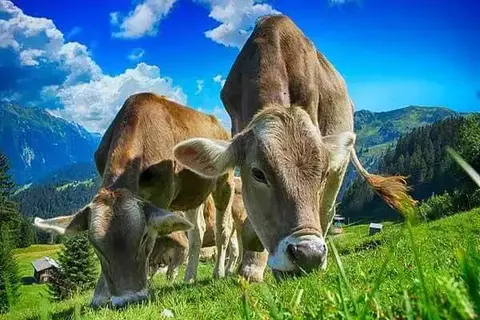
- Dogs15 Amazing Facts About Siberian HuskyBy Charlotte Green

- LivestockWhat Do Llamas Eat?By Lucas Torres
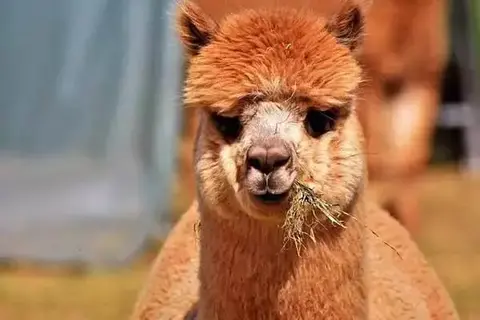
- Dogs12 Dog Movies That Will Have You In TearsBy Lucas Torres

- WildlifeWhat Do Giraffes Eat?By Murphy Scott

- Birds20 Interesting Facts About OwlsBy Camilo Walker

- Birds7 Interesting Facts About SeagullsBy Lucas Torres
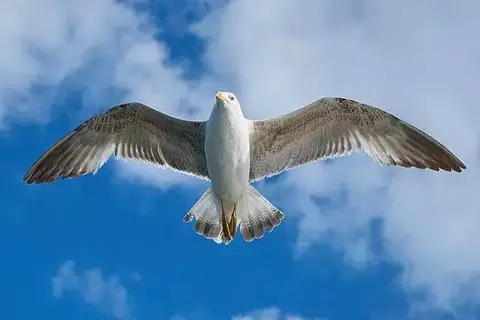
- BirdsWhat Is A Food Of Owls?By Amelia B

- DogsDogs That Dig FurnitureBy Amelia B

- DogsHow To Choose Dog Shoes For Walking?By Khai Dove
